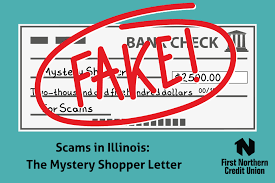Safeguarding public finances is a paramount concern for governments worldwide. To navigate the complex landscape of business and banking transactions, the Uniform Commercial Code (UCC) lays down clear regulations and delineates the obligations of all parties involved. Within its framework, the UCC stipulates that in some instances of fraudulent dealings, the financial repercussions are shared among the involved parties, contingent upon their respective levels of diligence and carelessness. Therefore, to mitigate potential liability when faced with fraudulent activities, it becomes essential to implement robust control measures.
Image may be NSFW.
Clik here to view.
As technology continues to evolve, it has not only diminished the efficacy of conventional fraud prevention strategies but also paved the way for new fraudulent schemes. In the past, many governments depended on physical security features integrated into check designs to combat check fraud. These security measures included intricate watermarks, distinctive colours, and elaborate graphical patterns. However, advancements in duplication technologies and the advent of remote deposit capture have significantly undermined these traditional safeguards.
In response to these challenges, the banking sector has innovated a range of fraud prevention mechanisms. One such tool is positive pay, a reconciliation service offered by banks to enhance security for checking accounts. This service involves the bank meticulously cross-referencing checks presented for payment against a detailed record of checks issued by the government. If a check surfaces that does not align with the information on file—be it the date, check number, or amount—it is flagged as an exception item, indicating a discrepancy that requires further investigation.
Image may be NSFW.
Clik here to view.
Building upon this concept is payee-positive pay, an upgraded version of the basic service. This enhanced offering verifies the date, check number, and amount and requires validation of the payee’s name. This added layer of scrutiny helps ensure that funds are only disbursed to legitimate recipients.
In addition to these measures, banks have implemented ACH blocks and filters as crucial defences against unauthorised electronic transactions. ACH blocks act as a complete barrier, preventing any disbursement from an account without explicit prior consent. Meanwhile, ACH filters take a more selective approach; they allow disbursements only if they correspond with a pre-approved list of transactions or identification numbers. By employing these advanced techniques, banks aim to create a fortified environment where public funds are protected against the ever-evolving threat of fraud.
Image may be NSFW.
Clik here to view.
In the intricate world of government finance, reconciliation tools are vital instruments for managing the delicate dance of bank account oversight. These sophisticated systems empower governments to seamlessly gather essential information from their banking institutions or receive data that facilitates the meticulous end-of-period reconciliation of their accounts. Some banks even go a step further, offering comprehensive tools that can execute complete reconciliations and generate in-depth reports detailing every item reconciled.
Amidst the daily bustle of financial activities, intra-day access emerges as a crucial feature. It grants governments the ability to monitor bank transactions as they unfold throughout the business day. This real-time insight is made possible through various online platforms provided by banks, alongside alternative methods such as fax, email, and direct data transmissions that bridge the gap between bank systems and governmental computers.
Image may be NSFW.
Clik here to view.
To enhance security, Universal Payment Identification Codes (UPIC) are used. Governments can use these unique identifiers instead of their actual bank account numbers. This clever strategy helps safeguard sensitive account information from potential exposure.
In light of rising concerns about bank account fraud, the Government Finance Officers Association (GFOA) advocates for a series of protective measures that governments should implement. One recommendation is the establishment of robust internal controls designed to fortify financial integrity.
Governments are encouraged to conduct surprise audits on a regular basis, along with annual reviews of their existing procedures. Ensuring the physical security of all checks is paramount; maintaining check images instead of relying solely on paper copies can significantly reduce risks. Check stock should be stored in a locked and secure environment, accompanied by a formal inventory that is meticulously updated. Each day, the check stock must be secured, and any continuous check stock used in printers should be removed to prevent unauthorised access. The use of blank or unprinted check stock can further bolster security, with inventory control numbers assigned to each batch. In contrast, actual check numbers are generated through the financial accounting system.
Image may be NSFW.
Clik here to view.
Moreover, governments must physically void any returned checks and their copies, ensuring they are either securely stored in a locked location or destroyed according to a predetermined schedule. When it comes to electronically deposited checks, the temporary physical security of these documents must also be prioritised; this includes secure storage facilities and timely destruction methods such as shredding. After all, the depositing government ultimately bears the responsibility for any fraudulent activity linked to these checks.
Lastly, safeguarding signature plates, cards, and related software is essential in maintaining security. An additional layer of scrutiny should be mandated for all checks processed, reinforcing the commitment to protecting public funds against any fraudulent endeavours.
Through these thoughtful strategies, governments can navigate the complexities of financial management while shielding themselves from the looming threats of fraud, ensuring a more secure fiscal landscape for their operations.
Once upon a tim,e in a bustling municipal office, the diligent finance team was tasked with safeguarding the city’s funds. They gathered around a large oak table, discussing ways to enhance their financial security and mitigate risks associated with payroll and Accounts Payable disbursements.
Image may be NSFW.
Clik here to view.
Their first idea was to explore the possibility of establishing a Controlled Disbursement account. This approach would grant them greater oversight over all outgoing payments as long as they complied with legal stipulations. They realised that utilising batch ACH transactions for direct deposits instead of traditional checks would not only streamline their processes but also significantly diminish the chances of fraud and lower payment-related costs.
As the conversation flowed, one team member emphasised the importance of implementing a dual authorisation system for wire transfers and ACH files. This system would require the approval of two individuals for both the initiation and release of these transactions, creating an extra layer of security. They agreed that daily reconciliations of wires and ACH releases by staff members were essential to ensure accuracy and transparency.
They recognised the necessity of adequately segregating duties within their team. To prevent potential conflicts of interest or mishandling of funds, each person involved in initiating, authorising, preparing, signing, mailing payments, and reconciling bank statements would have distinct roles.
The discussion turned to the importance of reviewing signature cards and authority levels. They decided it was vital to promptly revoke any individual’s access to bank transactions upon their resignation or termination, and at least once a year; they would conduct a thorough review to ensure everything remained up to date.
In their quest for financial prudence, they agreed to assess all bank accounts at least annually. Accounts that were seldom used would either be consolidated or eliminated, streamlining their banking operations.
Image may be NSFW.
Clik here to view.
Considering the complexity of their financial activities, they contemplated setting up separate accounts for cash inflows and outflows. This strategic move would allow them to implement specific fraud prevention measures tailored to each account. When suitable and without any restrictions, they could transform these accounts into Zero Balance Accounts (ZBAs) that would be swept into the government’s concentration account, ensuring optimal cash management.
The team also acknowledged the importance of safeguarding sensitive information. They established protocols for the secure storage and destruction of documents containing account details and related information. Moreover, they recognised the need for robust controls when employees accessed the government’s financial and banking systems remotely, emphasising the importance of restricting file sharing.
As part of their ongoing commitment to compliance and risk management, they resolved to consult with the government’s legal counsel at least once a year. This consultation would focus on identifying any changes in laws that could shift liability for fraudulent transactions onto the government itself.
Image may be NSFW.
Clik here to view.
Thus, with careful planning and collaboration, the finance team fortified its defences against fraud while ensuring that every dollar was accounted for. Their dedication to diligence not only protected public funds but also instilled confidence in the community it served. Thus, it continued its mission, ever vigilant in its quest for financial integrity.
In the intricate realm of safeguarding against fraud, particularly in collaboration with government financial institutions, there lies a tapestry of strategies woven together to fortify disbursement practices. One of the most compelling threads in this tapestry is the implementation of positive pay, or ideally, payee-positive pay, across all disbursement accounts. This mechanism requires that each check issued is verified against a list of approved payments, allowing for daily reconciliation of any discrepancies. Positive pay stands out as a formidable line of defence against fraudulent activities. It’s crucial to understand that should a governmental entity choose to forgo this service offered by its bank, it assumes full responsibility for any resulting fraudulent transactions, shifting the burden away from the financial institution.
]Image may be NSFW.
Clik here to view.
Moreover, it is prudent to instruct banks to automatically return any items that do not conform to positive pay guidelines. This establishes a default procedure that can help maintain the integrity of transactions. A robust policy should be established to delineate the roles within the organisation, ensuring that those who approve exceptions in positive pay are distinct from those who initially request or prepare checks. This separation of duties is essential in mitigating risks.
Conversely, reverse favourable pay arrangements should be avoided. In such scenarios, the government remains liable, which can expose it to higher risks. Therefore, it is wise to direct the bank to reject any withdrawals from accounts intended solely for deposits, ensuring that only authorised transactions are executed.
Implementing ACH filters or blocks on all accounts can prevent unauthorised electronic debits, further bolstering security. These selective ACH blocks allow electronic transactions only for those pre-approved, creating an additional layer of protection. It’s recommended that a formal plan be developed to review these ACH filters and blocks at least once a year to ensure they remain practical and relevant.
Image may be NSFW.
Clik here to view.
Additionally, considering Universal Payments Identification Codes (UPIC) for all receivables accounts could streamline processes and enhance security. In this digital age, it is paramount to ensure that your financial institutions provide multi-factor authentication for online banking services. This should encompass not only multiple passwords but also user-specific tokens, creating a fortress around transaction and administrative functions.
Furthermore, it is vital to maintain a clear and current record of all approved signers and access-only individuals. Your financial institution should provide a quarterly listing of these individuals by account. This transparency aids in accountability and prevents unauthorised access.
Finally, to ease the burden of reconciliation processes, utilising bank reconciliation services can significantly reduce the time spent on these tasks. This allows staff to focus on addressing exceptions rather than being bogged down in routine checks.
Use bank reconciliation services to save time on the reconciliation process and concentrate on any discrepancies. At least once a year, discuss improved or additional account security measures with your bank.
Image may be NSFW.
Clik here to view.
Maxthon: Your Trustworthy Companion in the Digital Realm
In an era where the internet is intricately woven into our everyday lives, safeguarding our online identities has become crucial. Imagine setting off on an exhilarating adventure through the vast and largely uncharted territories of the web, where each click uncovers a wealth of information and captivating experiences. Yet, amidst this extensive digital landscape, hidden threats lurk that could jeopardise personal data and overall safety. To traverse this complex online environment with confidence, it’s vital to choose a browser that prioritises user protection. This is where Maxthon Browser steps in as a reliable partner on your journey—and the best part? It’s completely free.
Maxthon Browser: An Excellent Choice for Windows 11 Users
Image may be NSFW.
Clik here to view.
What distinguishes Maxthon from typical web browsers is its steadfast commitment to protecting online privacy. Think of it as a vigilant guardian, always on the lookout for the numerous dangers present in the digital world. With a robust suite of integrated features—including ad-blockers and anti-tracking tools—Maxthon actively shields users’ online identities. As people browse the internet on their Windows 11 devices, these protective functionalities form a strong defence against intrusive ads and keep websites from monitoring their browsing activities.
The Ideal Fusion of Maxthon and Windows 11
As users explore the vibrant digital landscape on their Windows 11 devices, the significance of Maxthon’s dedication to privacy becomes increasingly evident. Sophisticated encryption techniques guarantee that sensitive data remains protected throughout their online journeys. Consequently, as individuals venture into the uncharted realms of cyberspace, they can embark on their digital explorations with peace of mind, knowing their information is shielded from unwanted scrutiny.
The post How To Safeguard Your Finances From Bank Account Fraud Risks appeared first on Maxthon | Privacy Private Browser.